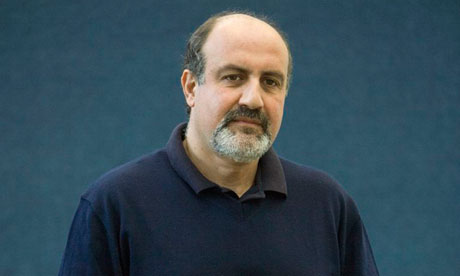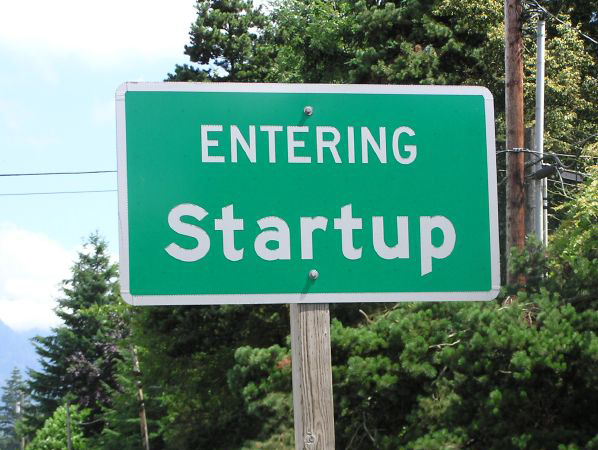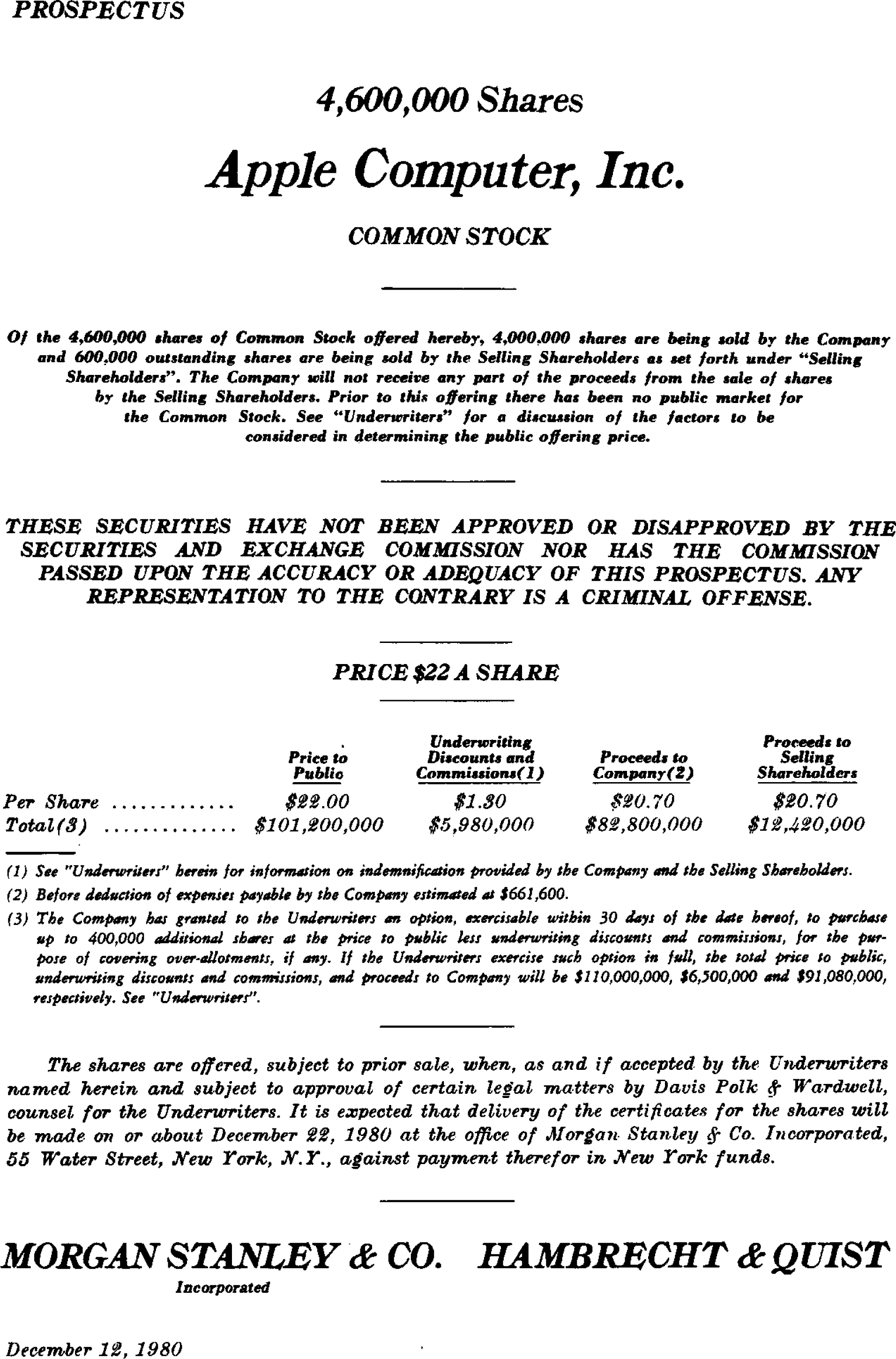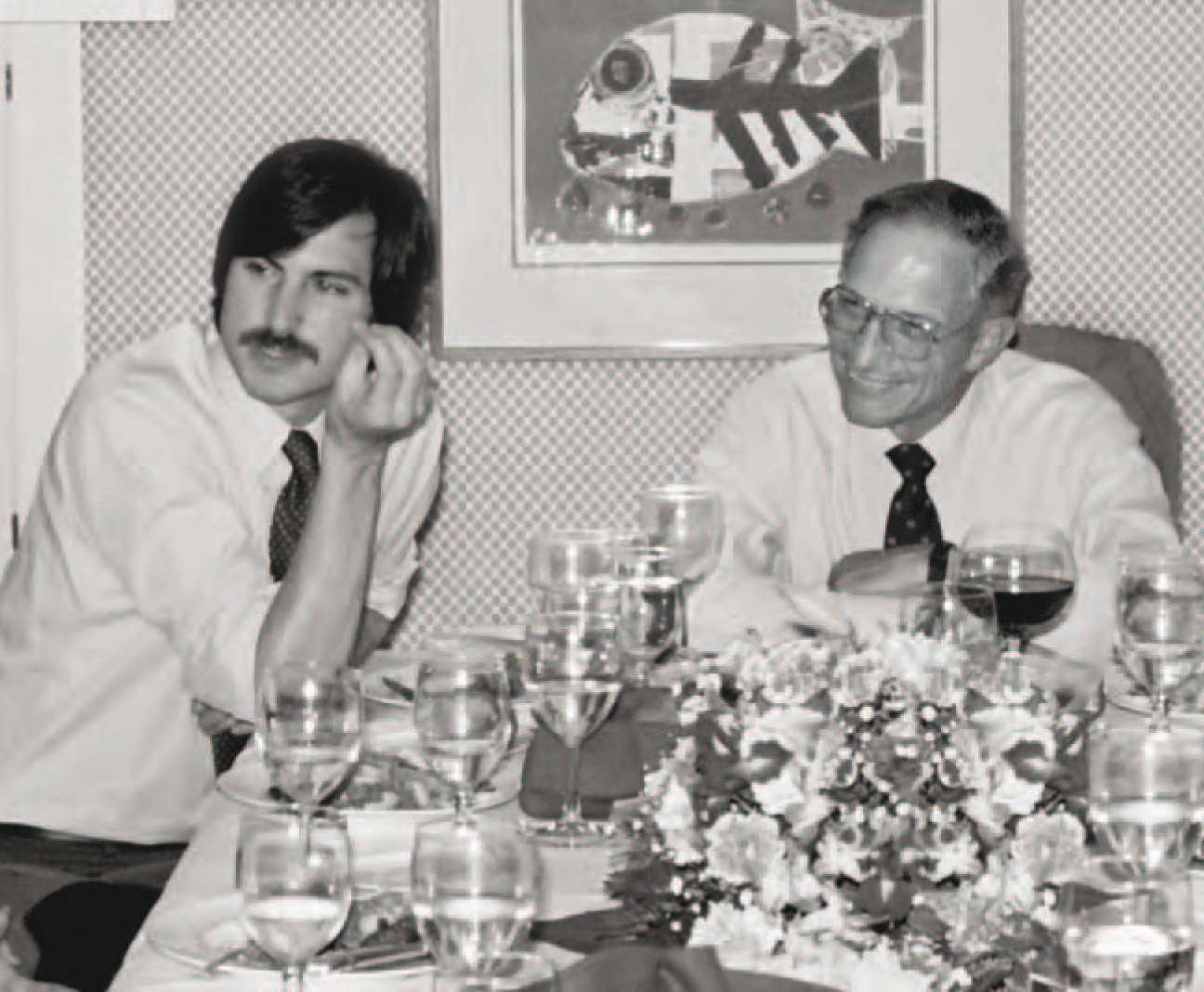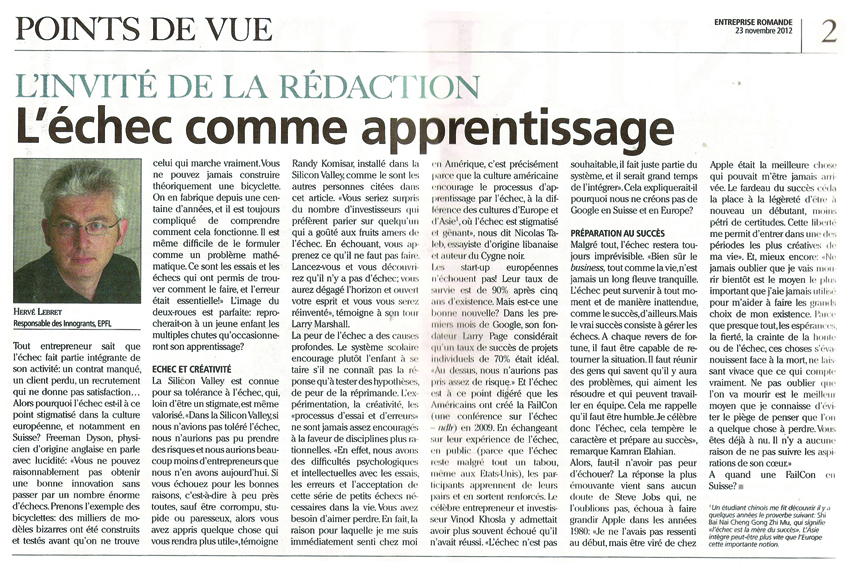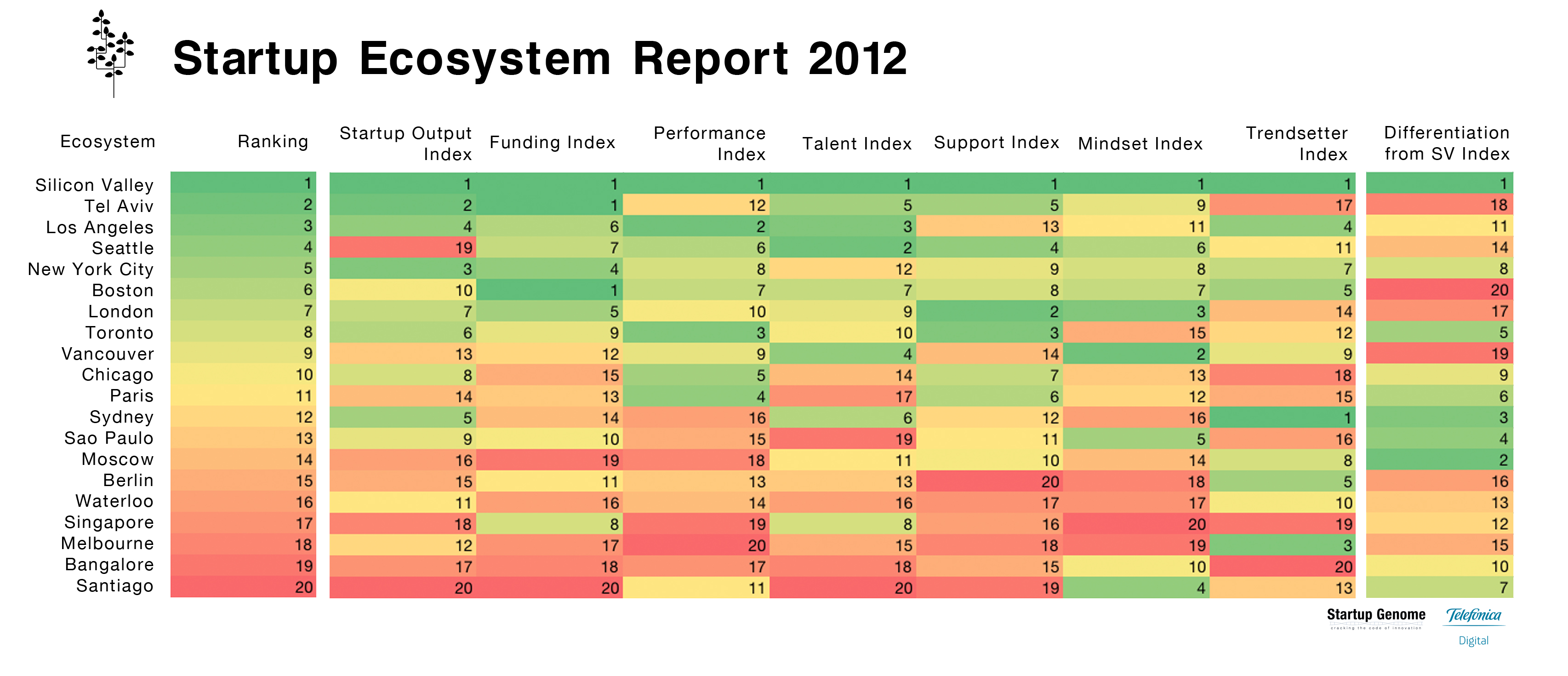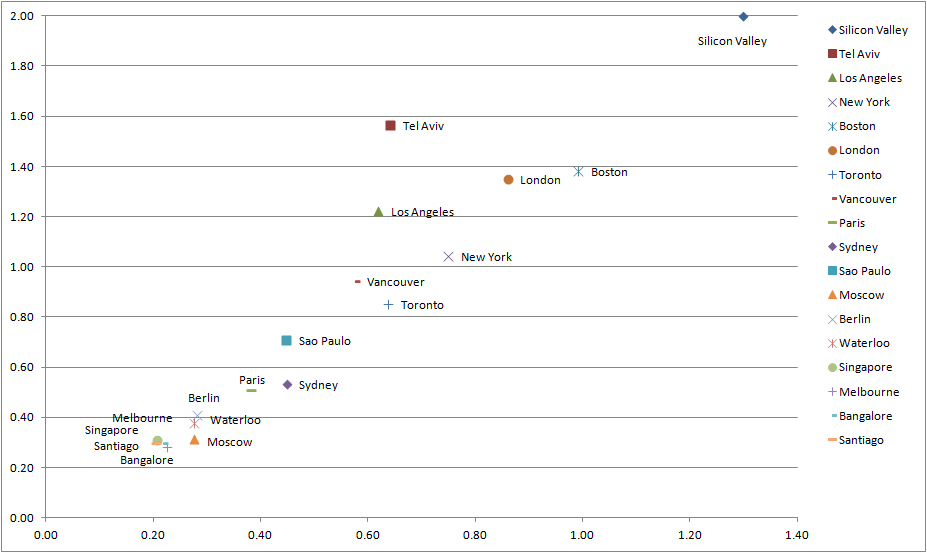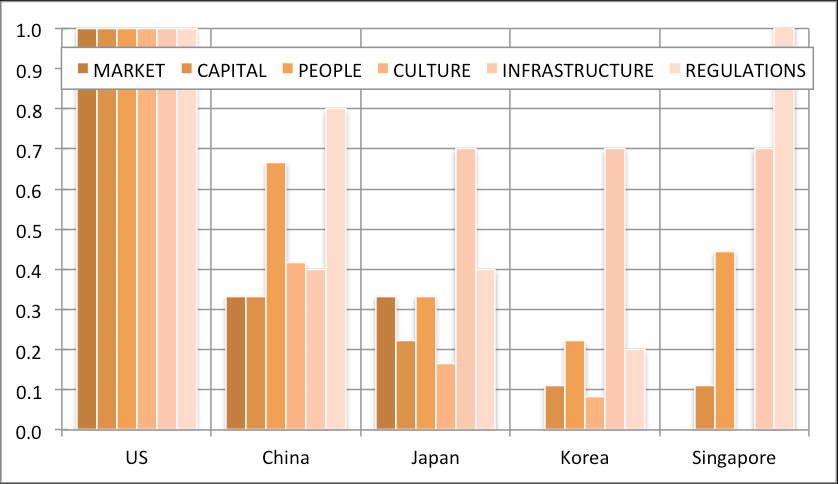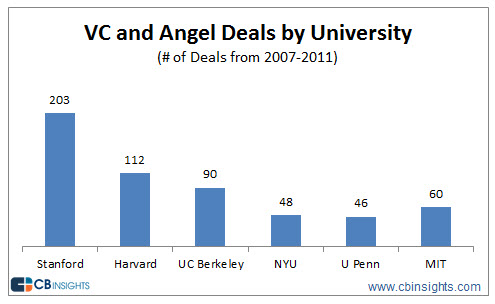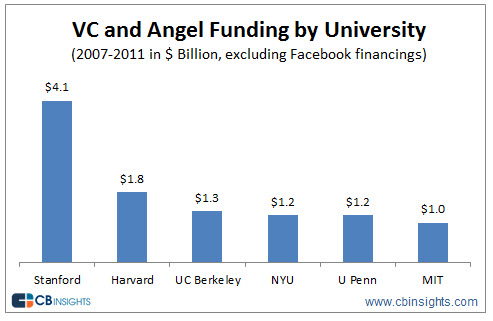Antifragile, things that gain from disorder by Nassim Nicholas Taleb
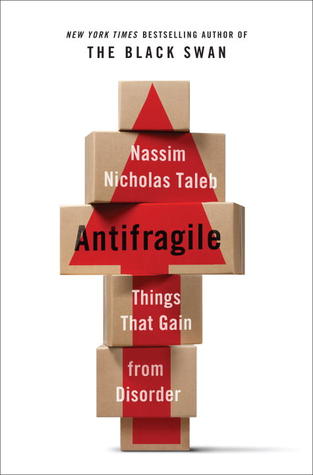
Here’s probably one of the toughest post I ever had to write and I am not sure it is a good one, even if the topic I am addressing is great and important. But it’s been a challenge to summarize what I learnt: Nicholas Nassim Taleb gives in this follow-up to the Black Swan a very interesting analysis of how the world can be less exposed to Black Swans, not by becoming more robust only, but by becoming antifragile, i.e. by benefiting from random events. His views include tensions between the individual and the groups, how distributed systems are more robust than centralized ones, how small unites are less fragile than big ones. This does not mean Taleb is against orgamizations, governments or laws as too little intervention induces totally messy situations. It is about putting the cursor at the right level. Switzerland represents for Taleb a good illustration of good state organizations with little central government, a lot of local responsibility. He has similar analogies for the work place, where he explains that an independent worker, who knows well his market, is less fragile to crises than big corporations and their employees. One way to make systems less fragile is to put some noise, some randomness which will stabilize them. This is well-known in science and also in social science. Just remember Athens was randomly nominating some of its leaders to avoid excess!
You can listen to Taleb here:
Now let me quote the author. These are notes only but for serious reviews, visit the author’s website, www.fooledbyrandomness.com/. First Taleb is, as usual, unfair but maybe less than in the Black Swan. Here is an example: “Academics (particularly in social science) seem to distrust each other, […] not to mention a level of envy I have almost never seen in business… My experience is that money and transactions purify relations; ideas and abstract matters like “recognition” and “credit” warp them, creating an atmosphere of perpetual rivalry. I grew to find people greedy for credentials nauseating, repulsive, and untrustworthy.” [Page 17] Taleb is right about envy and rivalry but wrong in saying it is worse in academia; I think it is universal! In politics for example. But when money is available, maybe rivalry counts less than where there is little.
Now a topic close to my activity: “This message from the ancients is vastly deeper than it seems. It contradicts modern methods and ideas of innovation and progress on many levels, as we tend to think that innovation comes from bureaucratic funding, through central planning, or by putting people through a Harvard Business School class by one Highly Decorated Professor of Innovation and Entrepreneurship (who never innovated anything) or hiring a consultant (who never innovated anything). This is a fallacy – note for now the disproportionate contribution of uneducated technicians and entrepreneurs to various technological leaps, from the Industrial Revolution to the emergence of Silicon Valley, and you will see what I mean.” [Page 42] [Extreme and unfair again, even if not fully wrong!]
“The antifragility of some comes necessarily at the expense of the fragility of others. In a system, the sacrifices of some units – fragile units, that is, or people – are often necessary for the well-being of other units or the whole. The fragility of every start-up is necessary for the economy to be antifragile, and that’s what makes, among other things, entrepreneurship work: the fragility of the individual entrepreneurs and their necessarily high failure rate”. [Page 65] What surprised me later is that Taleb shows that this is true of restaurants (not many succeed) as much as of high-tech start-ups. So it is not only about the uncertainty of new markets, but about uncertainty above all.
Mathematics of convexity
I have to admit Taleb is not easy to read. Not because it is complex (sometimes his ideas are pure common sense), but because it is dense with different even if consistent ideas. The book is divided in 25 chapters, but also in 7 books. In fact, Taleb insists on it, he might have written 7 different books! Even his mathematics is simple. His definition of convexity is a little strange though I found it interested (I teach convex optimization, and you might not know, it was the topic of my PhD!).
Jensen inequality is interesting [Pages 342, 227 – Jensen was an amateur mathematician!]– the convex transformation of a mean is less or equal than the mean after convex transformation. Again individual (concave, we die) vs. collective (convex, antifragile, benefits from individual failures). So risk taking is good for collectivity if with insurance mechanisms. Risk taking + insurance vs. speculation with no value added. An example of a short and deep idea: “Decision making is based on payoffs, not knowledge”. [Page 337]
“Simply, small probabilities are convex to errors of computation. One needs a parameter, called standard deviation, but uncertainty about standard deviation has the effect of making the small probabilities rise. Smaller and smaller probabilities require more precision in computation. In fact small probabilities are incomputable, even if one has the right model – which we of course don’t.” [Taleb fails to mention Poincare yet he quoted him in the Black Swan, but whatever.]
A visible tension between individual and collective interests
Quotes again: “What the economy, as a collective, wants [business school graduates] to do is not to survive, rather to take a lot, a lot of imprudent risks themselves and be blinded by the odds. Their respective industries improve from failure to failure. Natural and nature-like systems want some overconfidence on the part of the individual economic agents, i.e., the overestimation of their chances of success and underestimation of the risks of failure in their business, provided their failure does not impact others. In other words, they want local, but not global overconfidence”. […] In other words, some class of rash, even suicidal, risk taking is healthy for the economy – under the conditions that not all people take the same risks and that these risks remain small and localized. Now, by disrupting the model, as we will see, with bailouts, governments typically favor a certain class of firms that are large enough to require being saved in order to avoid contagion to other businesses. This is the opposite of healthy risk taking; it is transferring fragility from the collective to the unfit. […] Nietzsche’s famous expression “what does not kill me makes me stronger” can be easily implemented as meaning Mithridatization or Hormesis but it may also mean “what did not kill me did not make me stronger, but it spared me because I am stronger than others; but it killed others and the average population is now stronger because the weak are gone”. […] This visible tension between individual and collective interests is new in history. […] Some of the ideas about fitness and selection are not very comfortable to this author, which makes the writing of some sections rather painful – I detest the ruthlessness of selection, the inexorable disloyalty of Mother Nature. I detest the notion of improvement thanks to harm to others. As a humanist, I stand against the antifragility of systems at the expense of individuals, for if you follow the reasoning, this makes us humans individually irrelevant. ” [Pages 75-77]
A National Entrepreneur Day
“Compare the entrepreneurs to the bean-counting managers of companies who climb the ladder of hierarchy with hardly ever any real downside. Their cohort is rarely at risk. My dream – the solution – is that we would have a National Entrepreneur Day, with the following message: Most of you will fail, disrespected, impoverished, but we are grateful for the risks you are taking and the sacrifices you are making for the sake of the economic growth of the planet and pulling others out of poverty. You are the source of our antifragility. Our nation thanks you.” [Page 80]
Local distributed systems, randomness and modernity
“You never have a restaurant crisis. Why? Because it is composed of a lot of independent and competing small units that do not individually threaten the system and make it jump from one state to another. Randomness is distributed rather than concentrated.” [Page 98]
“Adding a certain number of randomly selected politicians to the process can improve the functioning of the parliamentary system.” [Page 104]
“Modernity is the humans’ large-scale domination of the environment, the systematic smoothing of the world’s jaggedness, and the stifling of volatility and stressors. We are going into a phase of modernity marked by the lobbyist, the very, very limited liability corporation, the MBA, sucker problems, secularization, the tax man, fear of the boss…” [Page 108]
“Iatrogenics means literally “caused by the healer”. Medical error still currently kills between three times (as accepted by doctors) and ten times as many people as car accidents in the United States, it is generally accepted that harm from doctors – not including risks from hospitals germs – accounts for more deaths than any single cancer. Iatrogenics is compounded by the “agency problem” which emerges when one party (the agent) has personal interested that are divorced from those of the one using his services (the principal). An agency problem is present with the stockbroker and medical doctor whose ultimate interest is their own checking account, not your financial and medical health.” [Pages 111-112]
Theories and intervention.
“Theories are super-fragile outside physics. The very designation “theory” is even upsetting. In social science, we should call these constructs “chimeras” rather than theories. [Now you understand why Taleb has many enemies.] A main source of the economic crisis started in 2007 in the Iatrogenics of the attempt by […] Alan Greenspan to iron out the “boom-bust” cycle which caused risks to go hide under the carpet. The most depressing part of the Greenspan story is that the fellow was a libertarian and seemingly convinced of the idea of leaving systems to their own devices; people can fool themselves endlessly. […] The argument is not against the notion of intervention; in fact I showed above that I am equally worried about under-intervention when it is truly necessary. […] We have a tendency to underestimate the role of randomness in human affairs. We need to avoid being blinded to the natural antifragility of systems, their ability to take care of themselves and fight our tendency to harm and fragilize them by not giving them a chance to do so. […] Alas, it has been hard for me to fit these ideas about fragility within the current US political discourse. The democratic side of the US spectrum favors hyper-intervention, unconditional regulation and large government, while the Republican side loves large corporations, unconditional deregulation and militarism, both are the same to me here. Let me simplify my take on intervention. To me it is mostly about having a systematic protocol to determine when to intervene and when to leave systems alone. And we may need to intervene to control the iatrogenics of modernity – particularly the large-scale harm to the environment and the concentration of potential (though not yet manifested) damage, the kind of thing we only notice when it is too late. The ideas advanced here are not political, but risk-management based. I do not have a political affiliation or allegiance to a specific party; rather, I am introducing the idea of harm and fragility into the vocabulary so we can formulate appropriate policies to ensure we don’t end up blowing up the planet and ourselves.” [Pages 116-118]
“To conclude, the best way to mitigate interventionism is to ration the supply of information. The more data you get, the less you know.” [Page 128]
“Political and economic “tail” events are unpredictable and their probabilities are not scientifically measurable.” [Page 133]
The barbell strategy and optionality
“The Barbell strategy is a way to achieve anti-fragility, by decreasing downside rather than increasing upside, by lowering exposure to negative Black Swans. So just as Stoicism is the domestication, not the elimination, of emotions, so is the barbell a domestication, not the elimination, of uncertainty.” [Page 159] “It is a combination of two extremes, one safe and one speculative, deemed more robust than a monomodal strategy. In biological systems, the equivalent of marrying an accountant and having an occasional fling with a rock star; for a writer, getting a stable sinecure and writing without the pressures of the market. Even trial and error are a form of barbell.” [Glossary page 428]
“The strength of the computer entrepreneur Steve Jobs was precisely in distrusting market research and focus groups – those based on asking people what they want – and following his own imagination, his modus was that people don’t know what they want until you provide them with it.” [Page 171]
“America’s asset is simply risk taking and the use of optionality, the remarkable ability to engage in rational forms of trial and error, with no comparative shame in failing, starting again and repeating failure. In modern Japan, by contrast, shame comes, with failure, which causes people to hide risks under the rug, financial or nuclear.”
“Nature does a California-style “fail early” – it has an option and uses it. Nature understands optionality effects better than humans. […] The idea is voiced by Steve Jobs in a famous speech: “Stay hungry, stay foolish.” He probably meant “Be crazy but retain the rationality of choosing the upper bound when you see it.” Any trial and error can be seen as the expression of an option, so long as one is capable of identifying a favorable result and exploiting it.” [Page 181]
“Option is a substitute for knowledge- actually I don’t understand what sterile knowledge is, since it is necessarily vague and sterile. So I make the bold speculation that many things we think are derived by skill come largely from options, but well-used options, much like Thales’s situation [who had an option with olive presses – pages 173-174] rather than from what we claim to be understanding.” [Page 186]
Taleb is skeptical with experts, with anyone believing in a linear model academia -> applied science ->practice (“lecturing birds how to fly”); he believes in tinkering, heuristics, apprenticeship, and makes again many enemies for free! He claims the jet engine, financial derivatives, architecture, medicine were first developed by practitioners and then theorized by scientists, not invented or discovered by them.
Tinkering vs. research
“There has to be a form of funding that works. By some vicious turn of events, governments have gotten huge payoffs from research, but not as intended – just consider the Internet. It is just that functionaries are too teleological in the way they look for things and so are large corporations. Most large companies, such as Big Pharma, are their own enemies. Consider blue sky research, whereby grants and funding are given to people, not projects, and spread in small amounts across many researchers. It’s been reported that in California, venture capitalists tend to back entrepreneurs, not ideas. Decisions are largely a matter of opinion, strengthened with who you know. Why? Because innovations drift, and one needs flâneur-like abilities to keep capturing the opportunities that arise. The significant venture capital decisions were made without real business plans. So if there was any analysis, it had to be of a backup, confirmatory nature. Visibly the money should go to the tinkerers, the aggressive tinkerers who you trust will milk the option.” [Page 229]
“Despite the commercial success of several companies and the stunning growth in revenues for the industry as a whole, most biotechnology firms earn no profit.” [Page 237] [Optionality again]
“(i) Look for optionality; in fact, rank things according to optionality, (ii) preferably with open-ended, not closed-ended, payoffs; (iii) do not invest in business plans but in people, so look for someone capable of changing six or seven times over his career, or more (an idea that is part of the modus operandi of the venture capitalist Marc Andreessen); one gets immunity from the backfit narratives of the business plan by investing in people. Make sure you are barbelled, whatever that means in your business.” [Page 238]
“I did here just debunk the lecturing-Birds-How-to-Fly epiphenomenon and the “linear model”, suing simple mathematical properties of optionality. There Is no empirical evidence to support the statement that organized research in the sense it is currently marketed leads to great things promised by universities. [Cf also Thiel lamentations about the promise of technologies – https://www.startup-book.com/2010/10/12/tech-equals-salvation/ ] Education is an institution that has been growing without external stressors; eventually the thing will collapse.” [A conclusion to book IV, page 261]
Why is fragility non linear?
“For the fragile, the cumulative effect of small shocks is smaller than the single effect of an equivalent single large shock. For the antifragile, shocks bring more benefits (equivalently, less harm) as their intensity increases (up to a point).”
Via negativa
“We may not need a name for or even an ability to express anything. We may just say something about what it is not. Michelangelo was asked by the pope about the secret of his genius, particularly how he carved the statue of David. His answer was: It’s simple, I just remove everything that is not David.” [Page 302-304]
[…] “Charlatans are recognizable in that they will give you positive advice. Yet in practice, it is the negative that’s used by the pros. One cannot really tell if a successful person has skills, or if a person with skills will succeed – but we can pretty much predict the negative, that a person totally devoid of skills will eventually fail.”
[…] “The greatest – most robust – contribution to knowledge consist in removing what we think is wrong. We know a lot more what is wrong than what is right. Negative knowledge is more robust to error than positive knowledge. […] Since one small observation can disprove a statement, while millions can hardly confirm it [The Black Swan!], disconfirmation is more rigorous than confirmation. […] Let us say that, in general, failure (and disconfirmation) are more informative than success and confirmation.”
[Funnily, I remember the main critics against my book were the lack of [positive] proposal in the end. I should have said there we many about what not to do!]
“Finally, consider this modernized version in a saying from Steve Jobs: “People think focus means saying yes to the thing you’ve got to focus on. But that’s not what it means at all. It means saying no to the hundred other good ideas that there are. You have to pick carefully. I’m actually as proud of the things we haven’t done as the things I have done. Innovation is saying no to 1,000 things.” [Page 302-304]
Less is more
“Simpler methods for forecasting and inference can work much, much better than complicated ones. “Fast and frugal” heuristics make good decisions despite limited time. First extreme effects: there are domains in which the rare event (good or bad) plays a disproportionate share and we tend to be blind to it. Just worry about Black Swan exposures and life is easy. There may not be an easily identifiable cause for a large share of the problems, but often there is an easy solution, sometimes with the naked eye rather than the use of the complicated analyses. Yet people want more data to solve problems.” [Page 305-306]
“The way to predict rigorously is to take away from the future, reduce from it things that do not belong to the coming times. What is fragile will eventually break, and luckily we can easily tell what is fragile. Positive Black Swans are more unpredictable than negative ones. Now I insist on the via negativa method of prophecy as being the only valid one.” [Page 310]
“For the perishable, every additional day in the life translates into a shorter additional life expectancy. For the non perishable, every additional day may imply a longer life expectancy. On general, the older the technology, the longer it is expected to last. I am not saying that all technologies do not age, only that those technologies that were prone to aging are already dead.” [Page 319]
“How can we teach children skills for the twenty-first century, since we do not know which skills will be needed? Effectively my answer would make them read the classics. The future is in the past. Actually there is an Arabic proverb to that effect: he who does not have a past has no future.” [Page 320]
[As can be read later in the book Taleb does not like the Bay Area culture. And it is no coincidence, it is a region with nearly no past, nearly no history, but it certainly help it create Silicon Valley innovations…]
“If you have an old oil painting and a flat screen television, you will never mind changing the television, not the painting. Same with an old fountain pen and the latest Apple computer; [Taleb is really cautious with modernity and innovation, even if a user of it. With architecture, he has similar concerns. Again he prefers tradition to aggressive modernity. Same with the metric system vs. old methods] Top-down is usually irreversible, so mistakes tend to stick, whereas bottom-up is gradual and incremental, with creation and destruction along the way, thought presumably with a positive slope.” [Pages 323-24]
“So we can apply criteria of fragility and robustness to the handling of information – the fragile in that context is, like technology, what does not stand the test of time. […] Books that have been around for ten years will be around for ten more; books that have been around for two millennia should be around for quite a bit of time. […] The problem in deciding whether a scientific result or a new “innovation” is a breakthrough, that is, the opposite of noise, is that one needs to see all aspects of the idea – and there is always some opacity that time, and only time, can dissipate.” [Page 329]
“Now, what is fragile? The large, optimized, overreliance on technology, overreliance on the so-called scientific method instead of age-tested heuristics.”
“By issuing warnings based on vulnerability – that is, substractive prophecy – we are closer to the original role of the prophet: to warn, not necessarily to predict, and to predict calamities if people don’t listen.”
Ethics
“Under opacity and complexity, people can hide risks and hurt others. Skin in the game is the only true mitigator of fragility. We have developed a fondness for neomanic complication over archaic simplicity. […] The worst problem of modernity lies in the malignant transfer of fragility and antifragility from one party to the other, with one getting the benefits, the other one (unwittingly) getting the harm, with such transfer facilitated by the growing wedge between the ethical and the legal. Modernity hides it especially well. It is of course an agency problem.” [Page 373]
[You can/should have a look at table 7, page 377]
“In traditional societies, a person is only respectable and as worthy as the downside he (or, more, a lot more, than expected, she) is willing to face for the sake of others.” [Page 376]
“I want predictors to have visible scars on their body from prediction errors, not distribute these errors to society.” [Page 386]
[Don Quixote was already the sign of the end of the heroism, of the ethical behavior. Taleb’s models are Malraux and Ralph Nader – “the man is a secular saint” [Page 394]. His enemies Thomas Friedman, Rubin and Stieglitz]
[Is “skin in the game” the only way? The only solution? What about transparency?]
About Science
“Science must not be a competition; it must not have rankings – we can see how such a system will end up blowing up. Knowledge must not have an agency problem. One doctoral student once came to tell me that he believed in my ideas of fat tails and my skepticism of current methods of risk management, but that it would not help him get an academic job. “It’s what everybody teaches and uses in papers” he said. Another student explained that he wanted a job at a good university, so he could make money testifying as an expert witness – they would not buy my idea on robust risk management because “everyone uses these textbooks”. [Page 419]
[So true! Check The Trouble with Physics.]
Conclusion
“All I want is to remove the optionality, reduce the antifragility of some at the expense of others. It is simple via negativa. […] The golden rule: “Don’t do unto others what you don’t want them to do to you”. […] Everything gains or loses from volatility. Fragility is what loses from volatility or uncertainty. […] Time is volatility. Education in the sense of the formation of the character, personality, and acquisition of true knowledge, likes disorder; label-driven education and educators abhor disorder. Innovation is precisely something that grains from uncertainty.” [Pages 420-22]
“It so happens that everything nonlinear is convex, concave or both. […] We can build Black-Swan-protected systems thanks to detection of concavity, […] and with a mechanism called convex transformation, the fancier name for the barbell. […] Distributed randomness (as opposed to the concentrated type) is a necessity.”
[General comments]
Taleb sometimes gives the feeling of contradictions: marketing is bad, but Steve Jobs is great; barbell strategy and optionality is great, but isn’t it about risks and downsides transferred to others [Isn’t Thales a pure speculator?], cigarettes are bad but traditions are good.
Also this love of tradition makes people with more background at ease to take risks with barbell strategy; but what about the poor with nothing to lose? Benefits might statistically go to those who already have… [It reminds the story told by J.-B. Doumeng: It is a millionaire who recounts his difficult beginnings: “I bought an apple 50 cents, I polished it to shine and I sold it for one franc. With this, I bought two apples 50cts, I carefully polished and I sold them 2 Fr after a moment, I could buy a cart to sell my apples and then I made a big inheritance … “]
You now know why it has been a challenge. A very strange, dense, fascinating book, but if you like these concepts, you must read Antifragile. In fact you must read the Black Swan first, if you have not and if you like it, I am sure you will read Antifragile.

